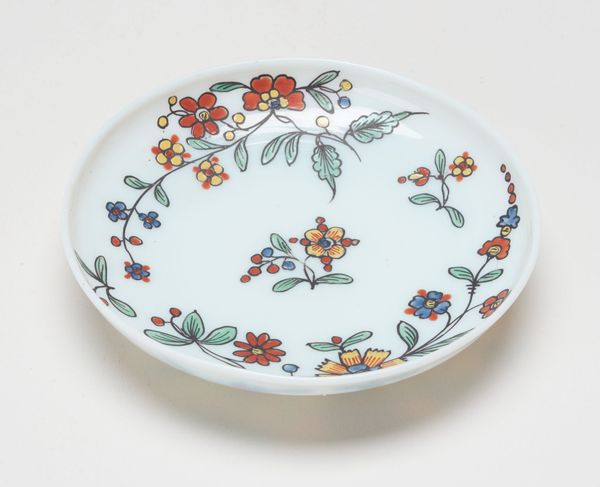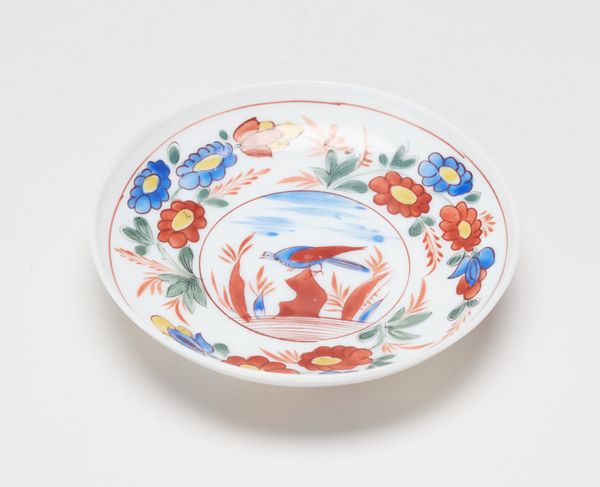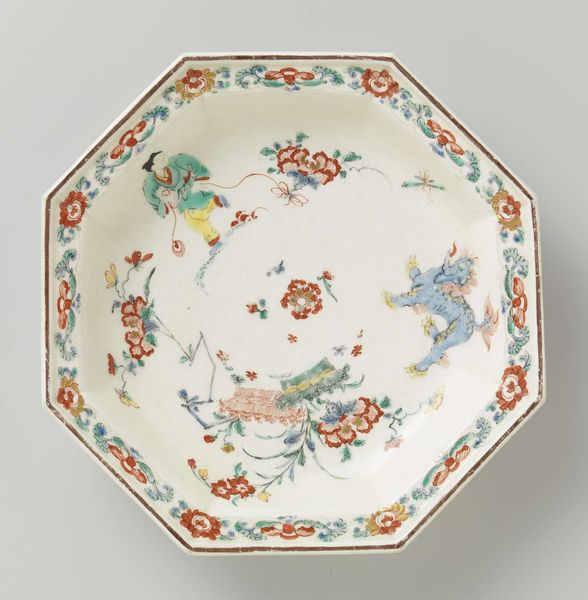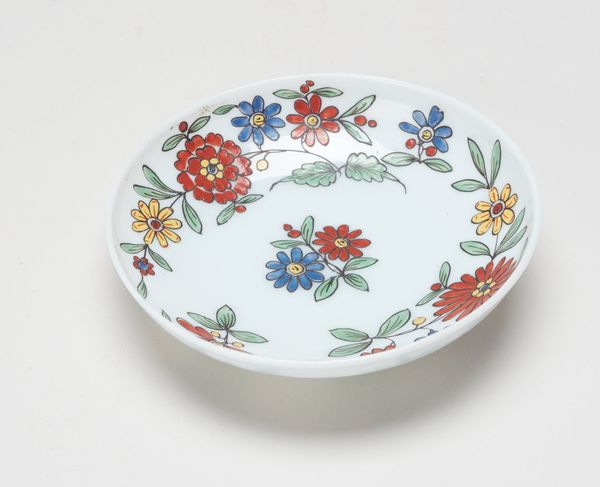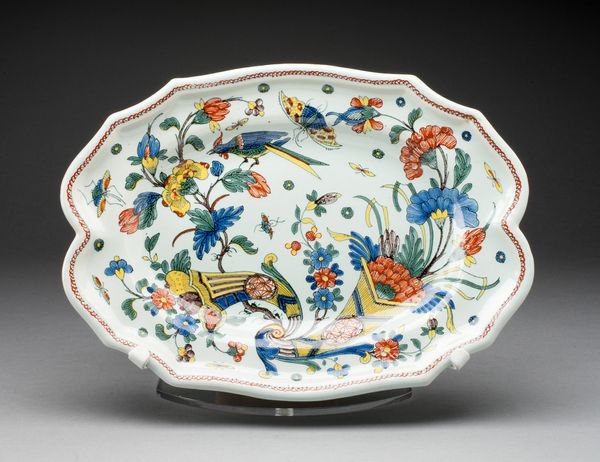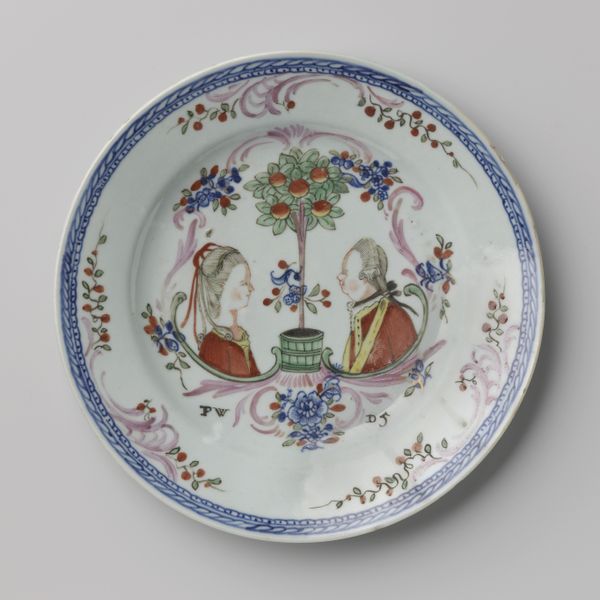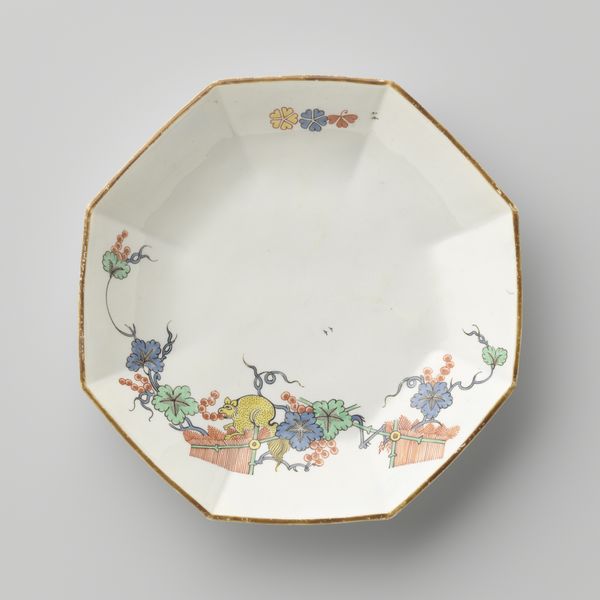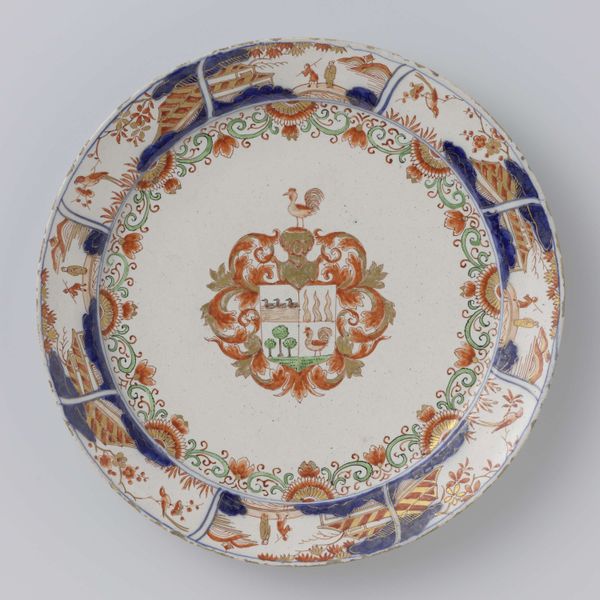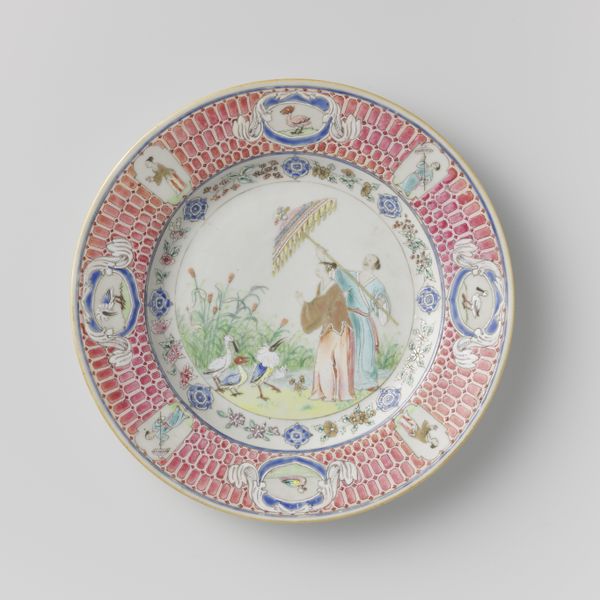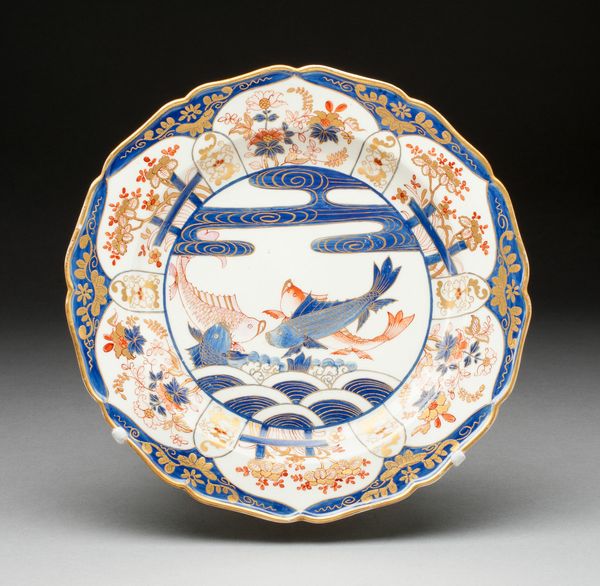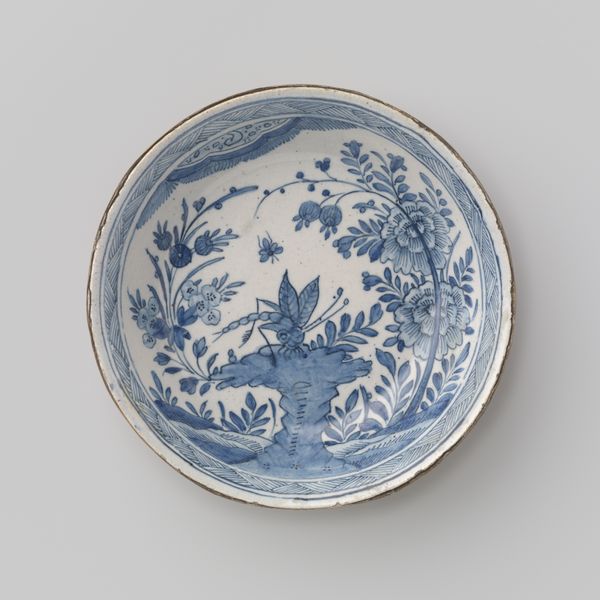
drawing, ceramic, glass, enamel
#
drawing
#
pottery
#
asian-art
#
ceramic
#
glass
#
enamel
#
orientalism
#
ceramic
#
decorative-art
Dimensions: 1 x 4 1/2 x 4 1/2 in. (2.5 x 11.43 x 11.43 cm)
Copyright: Public Domain
Curator: At first glance, it presents such a whimsical air. A little fairytale object. Editor: And what a contrast, then, knowing that this decorative Saucer, an example of Asian art, was crafted circa the 18th century, made from a combination of ceramic, enamel, and glass mediums. Its petite size adds to the sense of preciousness. Curator: Precious, yes, because porcelain tableware carries a significance far beyond mere utility. Consider how tea ceremonies across cultures serve as microcosms of societal values. Editor: Absolutely. The symmetry itself invites close inspection. Note the carefully balanced arrangement of floral motifs interspersed with what appear to be avian figures, circling around a central depiction of a stylized building, perhaps a pavilion or temple. Curator: Precisely. These architectural elements symbolize not only place but also ideals of harmony and refuge, reflecting centuries of aesthetic preference throughout diverse societies. Its design seems inspired by the tenets of Orientalism, hinting at cultural exchange. What draws my attention most is the painterly freedom in those enamelled flower forms, creating a field of almost dreamlike imagery. Editor: The limited color palette— primarily blue and orange—further directs our eyes toward the centrally positioned architecture. Observe how each color responds to one another with dynamic reciprocity, yet the building at its heart retains dominance due to its relatively stable forms. Curator: The colour is important here, red in Asian culture represents good fortune, blue associated with wisdom, the overall palette indicates that its user would hope for longevity and the acquirement of enlightenment. Even this relatively "simple" artifact serves to provide insight on cultural touchstones, reflecting not only status but complex psychological ties across geography and time. Editor: Analyzing the piece purely for its formal aspects deepens the aura already emitted when reflecting upon the social meanings; together, that makes appreciating “Saucer” a richer experience overall. Curator: Indeed. Objects often embody collective aspirations far more richly than grand statements or records can communicate. Editor: Well said. It presents itself, beyond function and art, as a sort of condensed visual poetry.
Comments
No comments
Be the first to comment and join the conversation on the ultimate creative platform.
